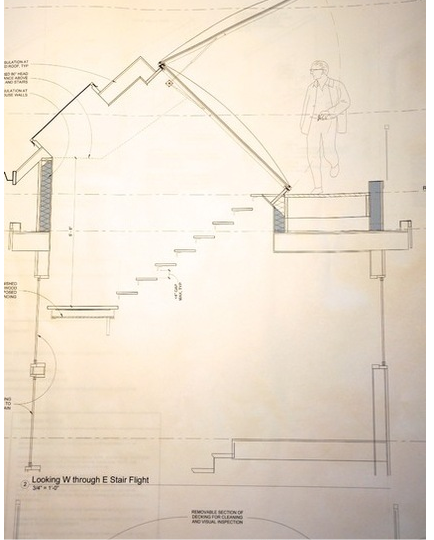Learn how plans, scope of work and specifications define the work to be completed
Here’s a great article from Houzz regarding understanding plans, scope of work and what should be outlined with your contractor.
It’s always important to know what you’re buying. When you buy something at a store, you get the hands-on experience of seeing its size and how it looks, feels and works. You leave the store knowing exactly what you’ve bought.
When you agree to pay for construction work, though, it’s up to you, your architect and your contractor to agree on what will be built. This can be difficult, because the “product” you’re talking about is something that’s never been built and doesn’t even exist yet except in everyone’s minds — and in documents.
And it’s the latter that will make all the difference in understanding what you’re paying for. Typically, when you contract for residential construction work, the documents for plans, scope of work and specifications can help define the work to be done so that you can be sure what the finished project will look like and include. Understanding these documents will help you feel confident that you know what you’re buying.
Plans
Whether you’re building a deck or undertaking a bath remodel or a whole-house remodel plus an addition, nearly all projects require drawn plans. Floor plans show the view of your project looking down from above. Elevations show your project from the ground level, looking in different directions. For instance, bathroom elevations show all four walls in the bathroom, and exterior elevations show all of the sides of the exterior of a home.

Sometimes sections (a view cutting through the house is a section, as shown here) are used to show a detail that would otherwise not be visible with the other views. Those views are what most homeowners will need to understand what is planned, though construction documents include many more views outlining the foundation, framing, structural, electrical, flashing, assembly and other details, such as lists of window and doors sizes, that are required for building the project.
Not everyone is able to visualize a 3D space from 2D plans, and that’s where perspectives and 3D modeling (as shown here) can really help. Many architects and designers either use computerized modeling programs or can draw pictures showing what the finished house will look like. Architectural modeling — building a small model of the finished house — can also be helpful.
Plans can be drawn by an architect, a designer, a contractor or a homeowner in most states, though some states have licensing requirements for designs of certain kinds or sizes. At a minimum, floor plans and elevations are usually required to obtain a building permit for a small project, though many cities and counties require much more information.
The value of having a design professional draw plans is that he or she should know local building and safety codes, should be familiar with what jurisdictions want to see and can provide the details that contractors need to build the project. Plans show not only what the space will look like, but also dimensions and how it will be built. So unless a homeowner is familiar with building practices, he or she may not be in a position to draft them.
Scope of Work and Specifications
While plans sometimes show the specifics of finish materials and other selections, they are usually supplemented by additional documents that specifically list materials to be used. Sometimes everything is outlined in a scope of work, or there is an additional list or spreadsheet with specifications. Sometimes the terms “scope of work” and “specifications” are used interchangeably, but one way or another, every material decision should be documented somewhere in the contract. If it’s not written down, it may not be included in the pricing, so make sure the elements you are expecting are outlined on the plans or in the scope or specifications.
A scope of work or specifications written by an architect or a contractor will usually have very specific notes about construction that a homeowner may not be familiar with, like materials used for plumbing, HVAC, insulation and waterproofing the building envelope.
For instance, will the plumbing supply lines be run with copper or PEX? Will the plumbing waste lines be ABS or cast iron? Will the ducting for the furnace be sealed and tested for leaks? All of these kinds of requirements can be documented in the scope of work, which then becomes a clear set of instructions for the contractor to follow when building your project.
The risk of not having an industry professional specify these materials is that you may wind up with inferior materials or an outcome that is not what you expected. It’s worthwhile to talk about building materials with your construction team — architect or designer and contractor — to understand what is required by building code, what is better than code and what the other options are.
Aside from the nuts and bolts of construction materials you won’t see once the walls are covered, the scope is also used to document all of the finish materials to be used. These materials should be easy to check if you have been closely involved in material selection. If you have chosen wood flooring for your bedrooms and the contractor lists carpet, you know further discussion is needed.
The scope of work can also document items that have not yet been selected. Those items can be eitherNIC (not in contract) or an allowance, which means there is a budget for the item even though it has not yet been selected. Notes can also be made if the homeowner will purchase certain materials (typically appliances, cabinet knobs and pulls, and sometimes other materials) for installation by the contractor.
Further specifications can come in list or table form, usually generated by the architect or designer. The goal is to call out each element in the project and provide enough information that the item can be ordered without further discussion. Typical specifications on something like a kitchen faucet would include the manufacturer name, model number and finish color (chrome, brushed nickel, stainless). For tile it might include the source, model name, color, finish (polished or honed if it’s stone), edge detail (flat or bullnose) and grout that goes with it (color, and regular or epoxy). Specifications sheets can also be an easy-to-use and visual way to keep track of decisions made and those that are still pending.
Most specifications sheets created by design professionals are organized by room and list all of the finishes for that room, everything from flooring to materials for the walls to light fixtures and whether the tub has a shower curtain or glass doors. They should be easy for homeowners to read and verify, and make clear what is intended at each location.
Most contractors want this documentation just as much as a homeowner does. Failing to specify materials and draw plans sets up everyone involved for potential misunderstanding and conflict. For instance, a vanity may be expected in a bathroom. The contractor may be pricing an economy-priced single-sink cabinet with drawers to one side. The homeowner may be thinking of a tall linen cabinet above those drawers, and nicer or custom-quality cabinets. The price point will be very different. Specifying these kinds of items will make it clear what the intended outcome is so that the contractor can price accordingly, ask for additional information or include an allowance until further decisions are made.
Frequently, even as the construction set of plans approaches completion, small changes get made to either design or materials. Rather than reissuing plans with each change, architects and contractors will often use the scope of work to document these changes and any other deviations from the construction set of plans.
Essentially, the plans provide a baseline for understanding the scope of the project, and the scope of work and specifications clarify anything not specifically called out on the plans or that has changed. Making sure you have these documents included in your construction contract and reading them before signing the contract are the most effective way to ensure that you will get what you think you are paying for.




